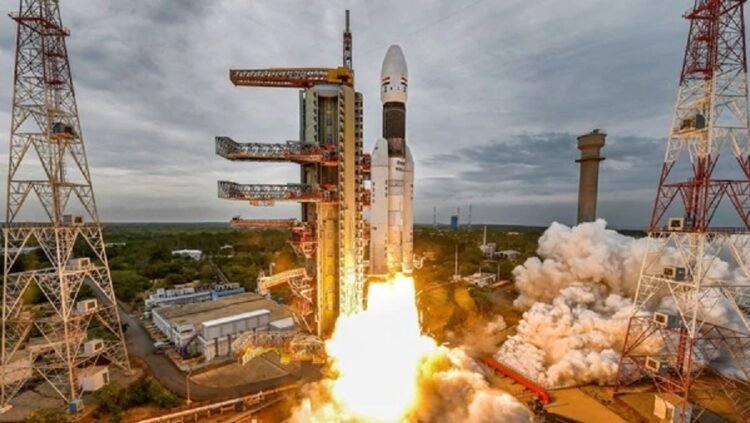Space Policy 4.0 Targets Rs 25,000 Crore Investment by 2035, Aims to Create Space Cities and Thousands of Jobs
ANDHRA PRADESH (India CSR): In a groundbreaking move, Andhra Pradesh has become the first Indian state to unveil a dedicated space policy, setting its sights on transforming the region into a global hub for space technology. Announced on July 13, 2025, the Andhra Pradesh Space Policy 4.0 is a visionary blueprint that aims to attract Rs 25,000 crore in investments by 2035 while creating a robust ecosystem for innovation, manufacturing, and job creation. With the establishment of two futuristic space cities in Lepakshi and Tirupati, the state is poised to play a pivotal role in India’s space ambitions, from the Chandrayaan-4 mission to the Bharatiya Antariksh Station (BAS). This initiative not only promises economic growth but also inspires a new generation of innovators, researchers, and entrepreneurs to reach for the stars.
A Bold Vision for Andhra Pradesh’s Space Economy
Andhra Pradesh’s Space Policy 4.0 is a strategic response to the burgeoning global space economy, which is projected to reach $1.8 trillion by 2035. The state, home to India’s only operational spaceport, the Satish Dhawan Space Centre (SDSC) in Sriharikota, is leveraging its geographic and industrial advantages to position itself as a leader in India’s space sector. Chief Minister N. Chandrababu Naidu, who approved the policy, emphasized its alignment with India’s Space Vision 2047, which includes ambitious goals like lunar sample return missions, human spaceflight, and an Indian space station by 2035.
The policy outlines a comprehensive plan to attract Rs 25,000 crore in investments over the next decade, targeting both domestic and international players. By fostering public-private partnerships and integrating academic institutions, Andhra Pradesh aims to create 5,000 direct and 30,000 indirect high-value jobs by 2035. This ambitious target reflects the state’s commitment to not only economic growth but also to nurturing a knowledge-driven, tech-powered future.
Twin Space Cities: Lepakshi and Tirupati
Lepakshi: The Innovation Hub
Located approximately 100 km from Bengaluru, Lepakshi is set to become India’s premier innovation hub for upstream and downstream space technologies. Spread over 30,000 acres, the Lepakshi Space City will focus on research, development, and startup incubation. It will house cutting-edge facilities for designing satellite systems, propulsion technologies, and space applications, fostering an environment where innovation thrives. The policy emphasizes a “plug-and-play” model, providing startups and enterprises with readyxiang ready-to-use infrastructure to accelerate development.
Tirupati: The Manufacturing Powerhouse
The Tirupati Space City, located in Routhusurmala village, about 63 km from Tirupati, will focus on the assembly and manufacturing of launch vehicles, satellites, and avionics. Situated near the Satish Dhawan Space Centre, this hub will specialize in producing aluminium propellant tanks, semi-cryogenic engines, and liquid stage integration for ISRO’s Launch Vehicle Mark-3 (LVM3) and the Next Generation Launch Vehicle (NGLV). A proposed six-lane logistics corridor will connect Tirupati Space City to Sriharikota, enhancing accessibility and operational efficiency.
The strategic proximity of these cities to Chennai (105 km from Sriharikota) and Bengaluru offers significant logistical advantages, positioning Andhra Pradesh as a key player in India’s space ecosystem.
Fiscal Incentives and Support for Enterprises
To attract a wide range of enterprises, from micro to mega, the Andhra Pradesh Space Policy 4.0 introduces a robust incentive structure under the Manufacturing Enterprises Development Policy (MEDP) 4.0. MSMEs can benefit from capital subsidies of up to 45% for special category units and up to 75% overall support for fixed capital investments. Large and mega enterprises are eligible for land cost rebates, state GST reimbursements, and top-up incentives aligned with central government schemes.
Additionally, the policy includes a Rs 100-crore SpaceTech Fund for shared infrastructure and a Rs 1,000-crore venture capital fund, registered as an Alternative Investment Fund with SEBI, to support startups. Infrastructure development costs will be reimbursed up to 50%, with a cap of Rs 3 crore per lab, ensuring that businesses have access to cutting-quality facilities without prohibitive costs.
Aligning with National Space Ambitions
The Andhra Pradesh Space Policy 4.0 is closely aligned with ISRO’s national programs, including the Chandrayaan-4 mission, the Venus Orbiter Mission, and the Gaganyaan human spaceflight program. The Tirupati Space City will play a crucial role in the production of LVM3 and NGLV components, supporting ISRO’s goal of launching 30-tonne payloads to low Earth orbit. The policy also aims to facilitate licensed production of rockets for both national and international launches, fostering public-private partnerships with ISRO and NewSpace India Limited (NSIL).
India’s Space Vision 2047 includes the Bharatiya Antariksh Station (BAS) by 2035 and a crewed lunar mission by 2040. Andhra Pradesh’s strategic initiatives, including the proposed third launch pad at SDSC, will support these ambitions by enhancing launch capabilities and fostering innovation in space technology.
Fostering Innovation and Education
A key component of the policy is its focus on integrating educational institutions to nurture talent and spark interest in space technologies. By involving students and academic institutions, Andhra Pradesh aims to build a pipeline of skilled professionals to drive the state’s space economy. The policy also supports the creation of a technical committee to oversee land allocation and infrastructure development, ensuring a streamlined process for investors.
The SpaceTech Fund and venture capital initiatives will provide startups with the resources needed to develop innovative solutions, from satellite imaging to propulsion systems. This focus on education and innovation aligns with India’s broader goal of increasing its share of the global space economy from 2% to 8% by 2030.
Economic and Global Impact
India’s space economy, currently valued at $8 billion, is expected to grow to $44 billion by 2033, with Andhra Pradesh playing a pivotal role. The state’s policy is designed to attract global investors, leveraging India’s 100% FDI policy in the space sector. By fostering partnerships with international space agencies and private firms, Andhra Pradesh aims to position itself as a global hub for space technology and innovation.
The establishment of the AP Space City Corporation, a special purpose vehicle, will streamline infrastructure development, funding, and partnerships. This corporation will serve as a one-stop shop for coordinating with ISRO, NSIL, and global entities, ensuring seamless integration into the national and international space ecosystem.
Challenges and Opportunities
While the policy is ambitious, challenges remain, including the need for significant infrastructure investment and the development of a skilled workforce. India’s space sector operates on a relatively modest budget compared to global counterparts like NASA, which could limit the scale of deep-space missions. However, Andhra Pradesh’s strategic location, robust incentives, and alignment with national goals provide a strong foundation for overcoming these challenges.
The policy’s focus on public-private partnerships and startup support is expected to drive innovation and cost-efficiency, mirroring ISRO’s success with cost-effective missions like Chandrayaan-3 and Mangalyaan. By capitalizing on these opportunities, Andhra Pradesh is well-positioned to lead India’s charge into the global space economy.
You Learn
Andhra Pradesh’s Space Policy 4.0 marks a historic milestone in India’s space journey, positioning the state as a pioneer in the nation’s burgeoning space economy. With its twin space cities, robust fiscal incentives, and alignment with ISRO’s ambitious goals, Andhra Pradesh is not only fostering economic growth but also inspiring a new era of innovation and exploration. As the state prepares to support missions like Chandrayaan-4 and the Bharatiya Antariksh Station, it stands at the forefront of India’s quest to become a global space superpower. The stars are within reach, and Andhra Pradesh is leading the way.
(India CSR)



















